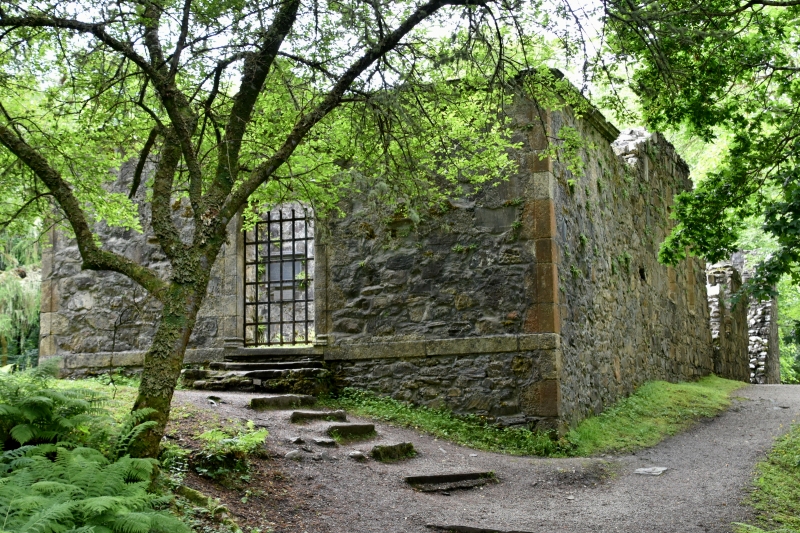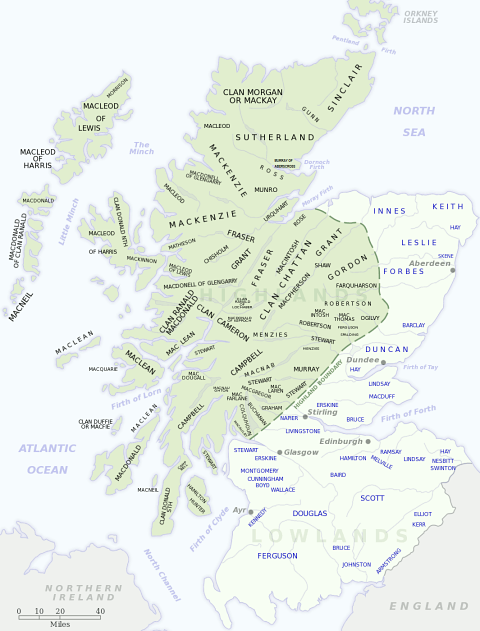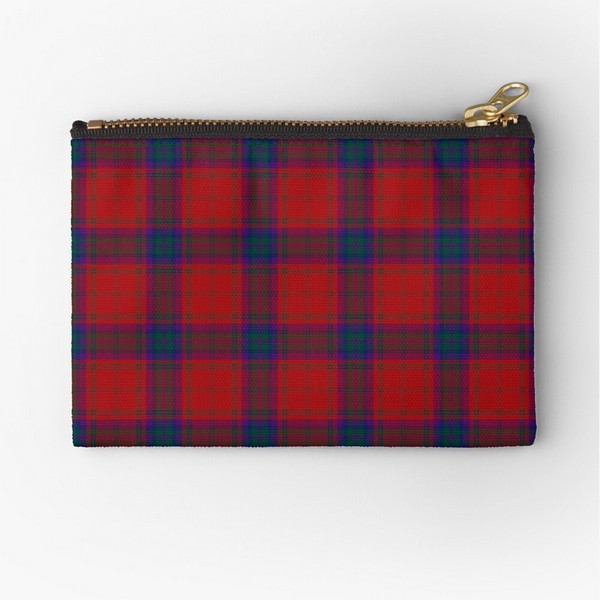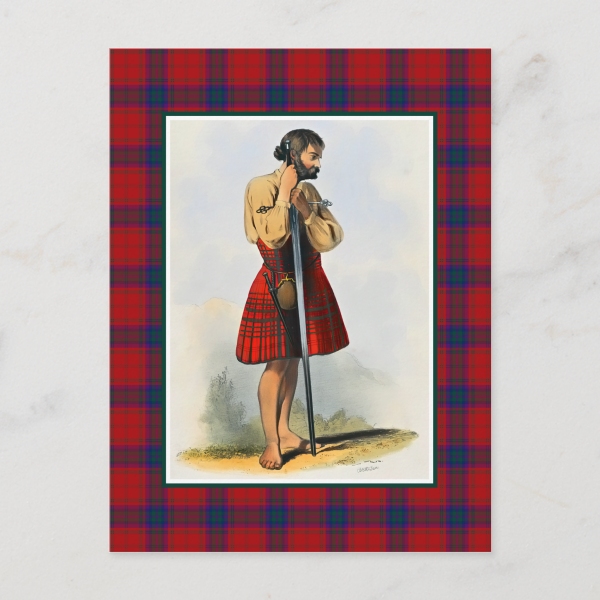
Motto: Buaidh no bàs (Victory or Death)
Historic Seat: Dunstaffnage Castle
District: Argyll
Associated Surnames: Conacher, Connall, Connell, Cowan, MacConnacher, MacCoull, MacCowan, MacDulothe, MacHowell, MacKichan, MacLintock, MacLucas, MacLugash, MacLulich, MacNamell, Macoull, Macowl
Associated Tartans:
Early MacDougall Genealogy and History:
(Excerpt from "The Scottish Clans and Their Tartans", James Grant, 1906)
Somerled of the Isles, who died in 1164, left four sons; First, Dougal, from whom descended the Lords of Lorne. The male line is continued in "The M'Dugall," designed of Dunolly. The son of Dugall above-named was Duncan, and it has been stated that he died without issue; if so, the descendant of the Clan Dugall, or Dougal, must be from Duncan, son of Dugall, the eldest son of Somerled, and from whom descended the Lords of Lorne.
Gregory assigns the representation as heir male to MacDougal of Dunolly.
In 1230 the Priory of Ardchattan was founded on the shore of Loch Etive by Duncan MacDougal of that Ilk. Much of it was standing in 1793.
In 1303 (sic) was fought the battle of Dalree,1 in which the famous "Brooch of Lorne" was lost and won in the conflict between Bruce and the traitor John MacDougal, son of Alaster of Argyll, as he was named, son-in-law of the Red Comyn, and in alliance with England; yet Bruce won his admiration by the splendour of his valour.
Rent from Bruce's shoulder, the royal brooch remained in the hands of MacDougal, and after many adventures it is now in possession of the Chief of the Clan. After the battle Bruce laid waste Argyllshire. Weary of the contest, the elder MacDougal submitted, but his son John fled to England by sea.
MacDougal, who fought at Dalree, was succeeded by his son Ewen (John?) MacDougal, father of John of Dunolly, whose son John was father of Dougal of Dunolly, who entered on his lands in 1562.
At that time the Master of Works to Mary was a Sir William MacDougal.
Dougal's son Duncan, whose name appears in the Roll of the Clans in 1587, was succeeded by his son, Sir John of Dunolly, in 1598. He married a daughter of Sir Duncan Campbell of Glenorchy, and left a son, Alexander of Dunolly, who died, s.p.2, so Allan his brother obtained from James VII a charter of part of Lorne, dated Windsor, 1686.
His son John fought for King James in 1715, and was forfeited, but his estate was retored to his son Alexander in 1745 by a charter from the Duke of Argyll. His fighting force in that year was 200. He is styled of Lorne by Duncan Forbes.
The MacDougals of Dunolly always buried their dead at the old Priory of Ardchattan. Various landholders of the name appear in the Acts of Charles II. Among these are the MacDougals of Freugh, Garthland, Gillespick, Logan, Mackerstoun, and Muirtoun.
Three of the name attained rank in the wars of Gustavus Adolphus3: Colonel MacDougal, afterwards a Major-General in the Imperial service; Lieutenant-Colonel MacDougal, who was slain in Swabia; Colonel MacDougal, who from the rank of Sergeant rose in four years to be Colonel of the Swedish Life Guards. He attacked Landsberg, defended Sweinfurt, defeated the Imperialists at Leignitz, and performed many other brilliant actions.
Alexander MacDougal of Dunolly entailed the lands of Dunolichbeg and others in August 1765 (Shaw's Index).
(End excerpt)
Next page: Clan MacDuff
Footnotes:
1 Dalree: The Battle of Dalrigh, also known as the Battle of Strathfillan, was fought on 11 August 1306 between the army of King Robert I of Scotland against the Clan MacDougall of Argyll who were allies of Clan Comyn and the English. It took place at the hamlet of Dalrigh near Tyndrum in Perthshire, Scotland. Read more about the Battle of Dalrigh at Wikipedia.
2 s.p.: sine prole, without offspring
3 Gustavus Adolphus: Gustav II Adolph, King of Sweden. Several Scottish brigades, who had been levied by King James VI, were under the military command of Sweden during the Thirty Years War. Read more about Scotland and the Thirty Years' War at Wikipedia.

Distribution of Scottish clans and families
View larger map at Wikimedia Commons

Browse the Clan MacDougall Tartan Collection with clothing, home decor, accessories, electronics cases, and more.

Clan MacDougall Postcard: Digitally cleaned and enhanced vintage illustration with tartan border.